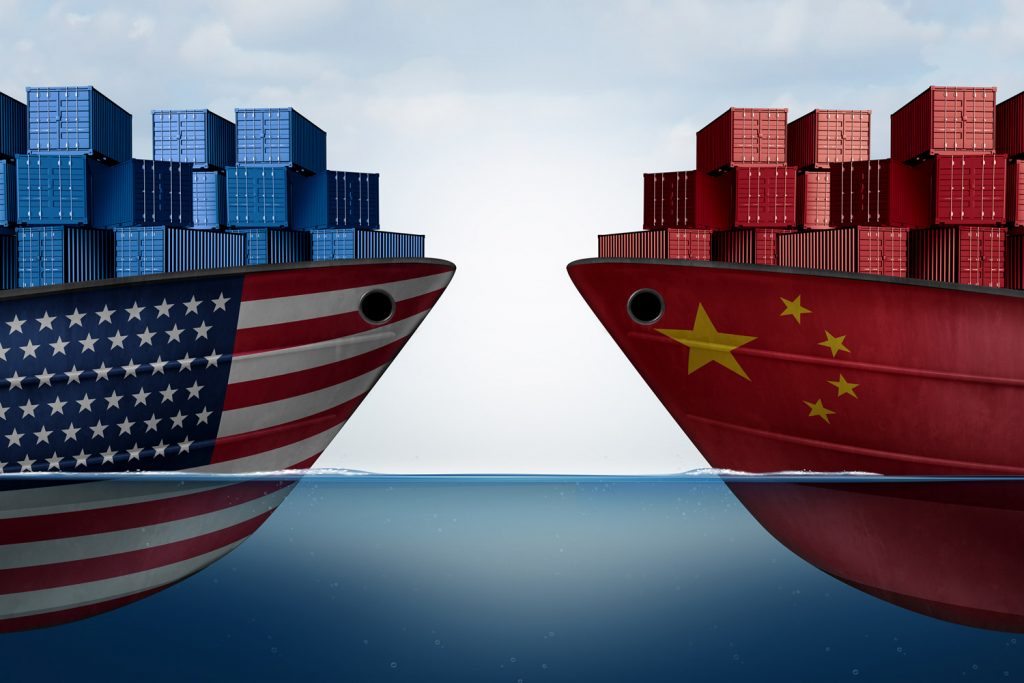Santosh Kumar Mohapatra
Trade plays an important role in the economic development of a country. Over the last two centuries, trade has multiplied amazingly, completely transforming the global economy. But now this has changed due to trade war – a fall-out of protectionism, currency war and dumping. A quarterly leading indicator of world merchandise trade slumped to its lowest reading in nine years, February 9.
According to the United Nations Trade Agency UNCTAD, international trade tensions could spike if the United States and China escalate their tariff war. Recent developments suggest that it is not only the US, China or Europe, but India may also be hit hard by the growing tide of protectionism. It means, nobody stands to gain from trade war.
The trade war is a situation wherein countries try to damage each other’s trade by imposing tariffs on imports. This usually happens when a country wants to save its own industries and create enough job opportunities for its own people and shrink trade deficit. Similarly, protectionism refers to government actions and policies that restrict or restrain international trade, often with the intent of protecting local businesses and jobs from foreign competition.
The world’s top economies especially China and the US have been locked in an escalating trade war since early 2018. For example, last year, Trump imposed tariff hikes of up to 25 per cent on Chinese goods worth $250 billion. The move prompted China to raise tariffs on $110 billion worth US goods. This puts the world’s largest economies at each other’s throats.
The genesis of trade war lies in the fact that for decades China has sold a far greater volume of goods to the US than it bought, leading to highest trade deficit of the US with China amounting $375 billion in 2017. This spurred Donald Trump to wage an all-out tariff war against China in July 2018 in a bid to force Beijing to make sweeping economic changes that would benefit US firms – end to forced technology transfer and the abolition of intellectual property theft.
The US alleges that the Chinese are stealing its firms’ technology and using it to help Chinese companies compete with the same firms in China and around the world. However, China claims to have advantages of producing goods at cheaper rate because of efficiency of labour and its sophisticated and flexible supply chain. China’s biggest advantage is the availability of most raw materials required to manufacture a given product (e.g, electronic components) domestically.
However, China pursues an anti-trade strategy called ‘dumping’. This happens when a manufacturer in one country exports a product to another country at a price that is either below the price it charges in its home market or its production cost. The objective of “dumping” is to capture the market or obliterate competition, which China does so efficiently. However, there are many countries including the US which have been imposing anti-dumping tariff on China to nullify its effect.
China also indulges in contentious currency manipulation otherwise known as currency war. Currency war, known as competitive devaluations, is a situation when countries seek to gain a trade advantage over other countries by making the exchange rate of their currency fall vis-à-vis other currencies. As the exchange rate of a country’s currency falls, exports become more competitive, while imports become more and more expensive. The Chinese yuan is manipulated and undervalued to the US dollar. Hence, Trump blames China for manipulating currencies and keeping them low against the dollar snatching export advantages from the US. This leads to rise of US imports and, thereby, a trade deficit.
America is also to be blamed for resorting to policy of protectionism in violation of globalisation that aims at the free movement of goods, services and people across the world in a seamless and integrated manner. The US has never been a truly free trade country and Trump’s protectionism is a continuation of a long history of US rejection of free trade and true globalisation. Trump’s imposition of tariffs on the EU, Chinese and most recently Turkish imports has cast a shadow over global trading patterns and precipitated a financial crisis in Turkey. The revised norms on the issuance of H1-B visas by US have also made it harder for Indians to secure H-IB visa.
America also enjoys advantages by taking recourse to quantitative easing to increase money supply and weaponising the dollar to preserve its global economic and geopolitical position. While the US accounts for about 20 per cent of the world’s economic output, more than half of all global currency reserves and trade is in dollars.
However, the recent trade tensions, with continued political risks and financial volatility, threaten world economy with a big economic downturn. Hence, Chinese President Xi Jinping and his US counterpart Donald Trump had agreed to a 90-day truce in the ongoing trade war beginning January 2019. America has threatened that if any settlement is not reached by March 1, it would increase the tariffs it imposed on Chinese goods worth $200 billion in September from 10 per cent to 25 per cent.
However, Trump has realised that if China retaliates, trade war will have a more detrimental impact on his own country than China. Today, the US-China trade relationship actually supports roughly 2.6 million jobs in the US across a range of industries. US companies face large opportunities to harness new and lucrative customer base in China that can further enhance employment and economic growth.
Economic data show that nations trading closely with China outperform those with less integrated trade ties. Hence, Trump has delayed March 1 deadline to unspecified period to escalate tariffs. However, that does not mean trade war is over. Both countries should eliminate punitive tariffs first they have imposed.
However, no solution is feasible unless top countries relinquish the “beggar-thy-neighbour policy” which is mother of trade war and other evils.
The writer is an Odisha-based economist. e-Mail: skmohapatra67@gmail.com.
